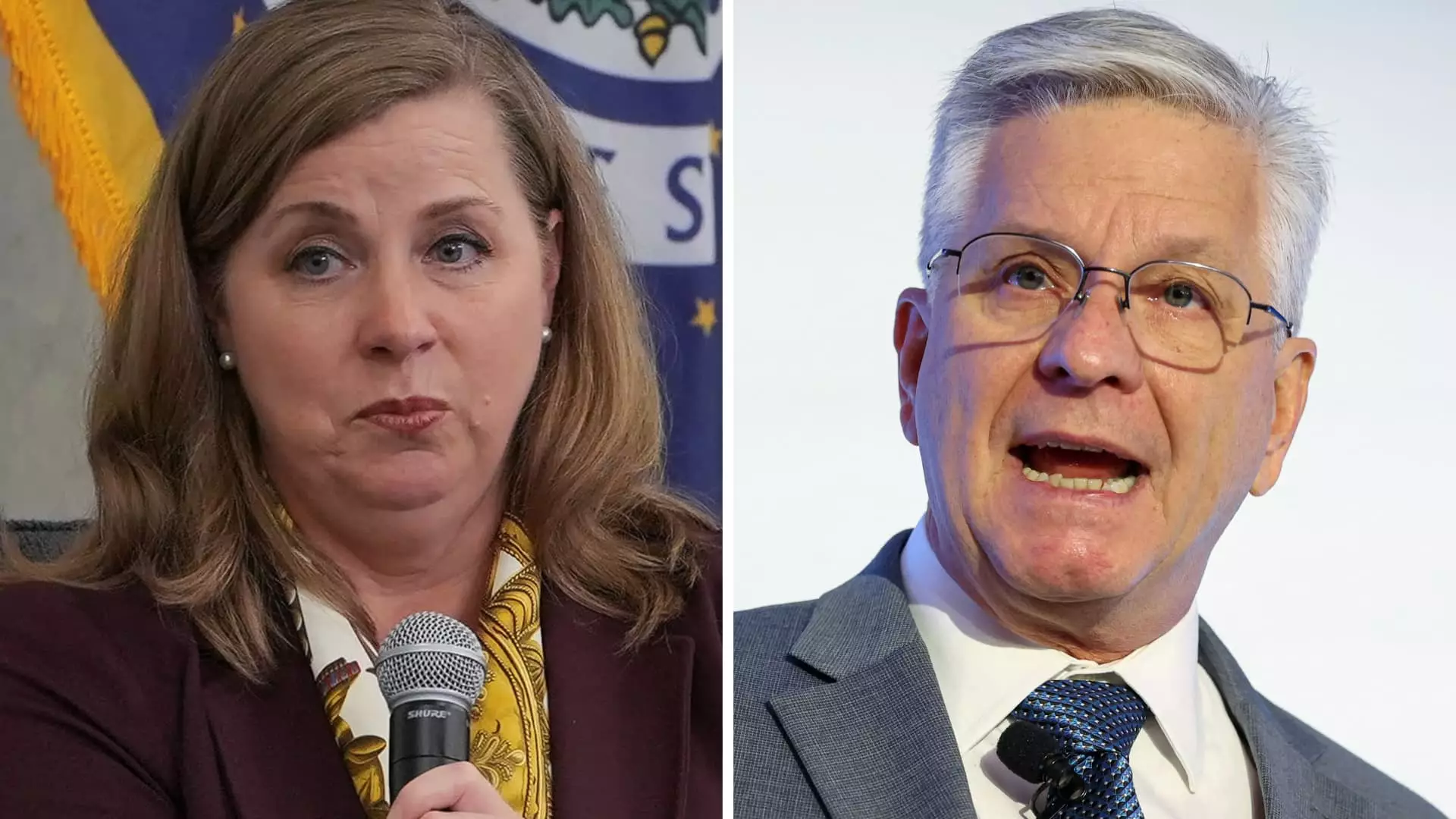In the ongoing debate on how the Federal Reserve should navigate the current economic landscape, a critical examination reveals that hesitation and cautiousness may indeed be a perilous strategy. The recent decision by the Federal Open Market Committee (FOMC) to hold interest rates steady has ignited a rare dissent among top officials, exposing fractures within the central bank’s consensus. The dissenting voices, led by Governors Christopher Waller and Michelle Bowman, argue for a proactive approach—favoring modest rate cuts—contending that delays could inflict lasting damage on the labor market and overall growth. Their stance underscores an increasingly urgent recognition that waiting too long to ease monetary policy risks further economic deterioration, especially when the impact of recent tariffs is still perceived as fleeting and manageable.
The decision to maintain the status quo may seem, on the surface, a prudent act rooted in caution. However, the true cost of inaction lies in the insidious erosion of economic resilience. When the central bank delays adjusting rates in response to mounting vulnerabilities, it risks falling behind the curve—allowing inflationary pressures to become entrenched or labor market conditions to deteriorate unnoticed until it is too late. The dissenting voices unambiguously believe that a measured, gradual easing—potentially up to 1.5 percentage points—would strike a better balance between supporting economic growth and controlling inflation. Their warnings remind us that economic policy cannot be based solely on short-term data but must anticipate future trends and vulnerabilities precipitated by external shocks, such as tariffs.
Tariffs and Their Disguised Threats
The recent focus on tariffs, particularly those introduced under President Trump’s administration, presents a complex challenge to monetary policymakers. While officials like Waller and Bowman contend that tariffs have only minimal, temporary impacts on inflation and the economy, the broader picture suggests a latent risk that cannot be easily dismissed. These trade measures introduce volatility and uncertainty into markets, threatening to fracture the delicate balance that sustains economic stability. Yet, some in the Fed seem content to dismiss these threats as fleeting—assuming that their effects will quickly dissipate.
This shortsightedness is dangerous. The assumption that tariffs’ inflationary impacts are merely temporary tracks a reckless underestimation of their potential to destabilize broader economic expectations. Waiting too long to respond risks allowing inflation expectations to become unanchored, potentially forcing the Fed into more aggressive, disruptive actions later. Meanwhile, policymakers who advocate for patience might underestimate the resilience of labor markets, which are already showing signs of strain. Business investment and worker confidence can diminish rapidly if uncertainty persists, threatening to snowball into a full-blown slowdown or recession. Essentially, the central bank’s inertia may be an unwitting contributor to economic fragility, instead of its safeguard.
Political Pressure and Central Bank Independence
The political landscape surrounding these monetary decisions highlights a tension—balancing economic prudence with political expediency. President Trump’s vocal criticisms of the Fed’s current stance exemplify how political pressure can threaten the independence of the central bank. His repeated calls for drastic rate cuts, even as many experts warn against such moves, serve as a stark reminder that monetary policy is increasingly politicized.
An independent, centrist approach rooted in data-driven decision-making is essential to safeguarding economic stability. Allowing short-term political pressures to dictate monetary policy risks prioritizing immediate political wins over long-term economic health. The Fed’s cautious stance—while criticized by some for perceived delay—may actually be an act of prudence, reflecting an understanding that destabilizing the economy with impulsive rate cuts could backfire severely. It is crucial for the public and Congress to recognize that the Fed’s primary responsibility is navigating these complex trade-offs objectively, rather than bowing to electoral or political pressures.
The debate within the Federal Reserve epitomizes a deeper struggle: to act timely and decisively or risk succumbing to complacency. The stakes couldn’t be higher. As external shocks, trade tensions, and inflationary pressures threaten to destabilize the economy, a central bank paralysis could undermine years of progress. To truly serve the public interest, the Fed must embrace a proactive, centrist approach—prioritizing stability over short-term political gains and recognizing that in today’s interconnected world, hesitation may be the most dangerous policy choice of all.

